I am trying to use two G5V-2-DC5 relays to switch four wires at the same time between two different outputs. All signals are 5 V. I've gotten this to work fine with a simple physical switch but want to trigger the relays from another circuit. Wiring the + side of the relay trigger to the input directly doesn't work. I've also tried putting a 2N2222 transistor in, triggered by the input with the collector wired to the positive rail but the emitter ends up with a voltage too low to trigger the relays.
I vaguely realize that there are usually resistors in a circuit (such as with an LED to restrict current) but any time I've put a resistor in this circuit the relays don't trigger. I could use some guidance on how to make this work.
The relay pins (4-13) connections are not shown in the below schematic. While they are wired they are part of a separate circuit. There are 2 relays wired in parallel which work properly and draw about 220 mA when pin 1 is wired directly to the +5 V rail via a physical switch.

